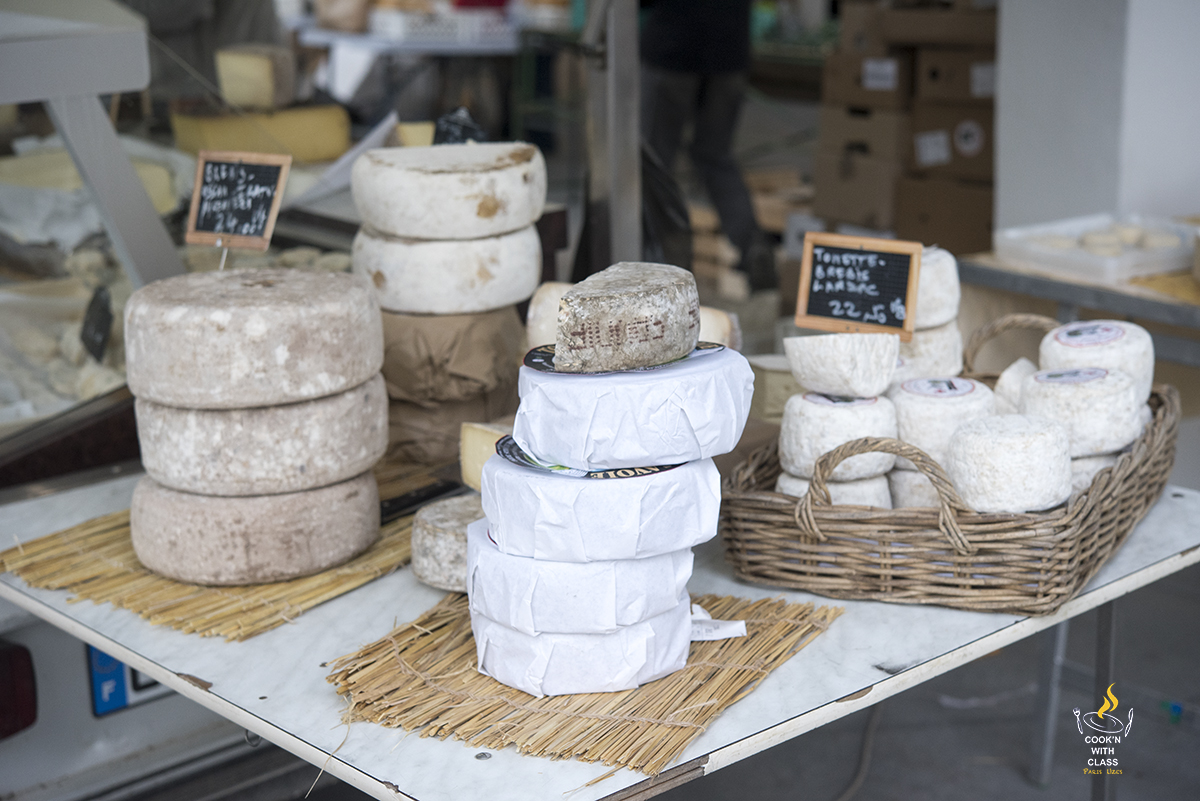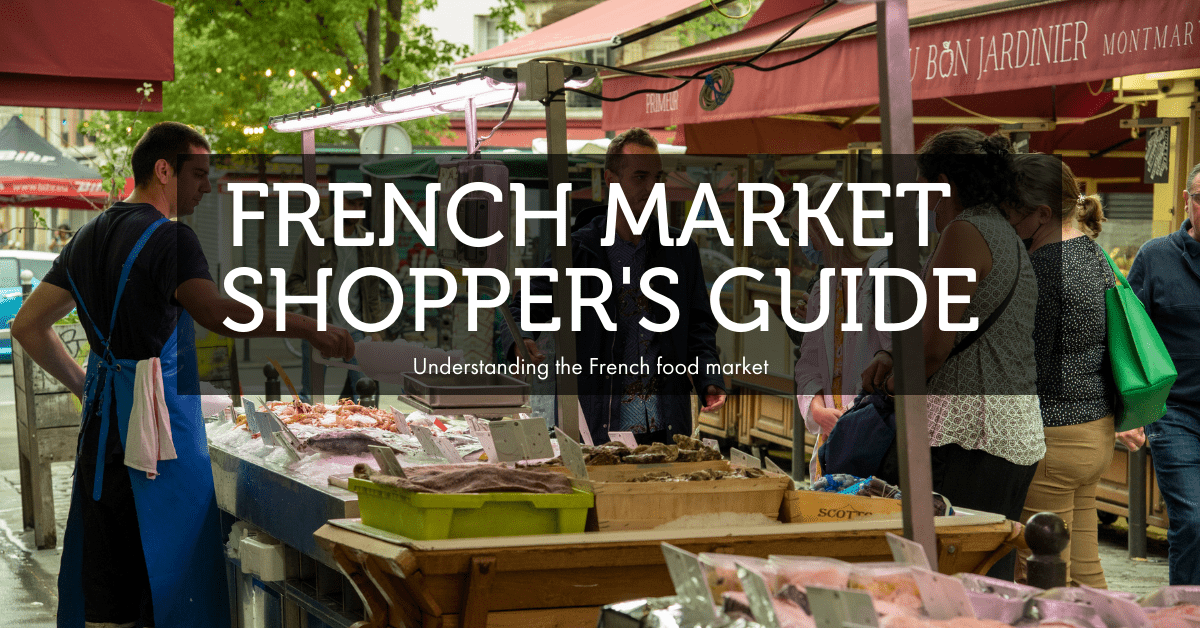
Understanding the French Food Market
Understanding the French Food Market
A Useful shopper’s guide
Modified, 10 August 2021
Since 2007, Cook’n with Class Paris has been leading eager English-speaking tourists to the French Food Market in Paris, Montmartre. The chefs assist their fellow cooks in selecting the best of the best in seasonal produce. For those who are looking for an even deeper understanding of French cuisine, Let’s Eat the World (Cook’n with Class Experiences), offers culinary tours and workshops that go from a few days to a week.
There are so many good reasons to shop at the French market and a lot is learned on this essential part of the French cooking classes. The hope is that these same skills in discerning what you buy and when you buy it can be used when the students return home and shop even at the local grocer.
And what better way to learn about a culture than to discover what they eat. But with so much choice, how do you make your way without guessing? Let me be your guide.
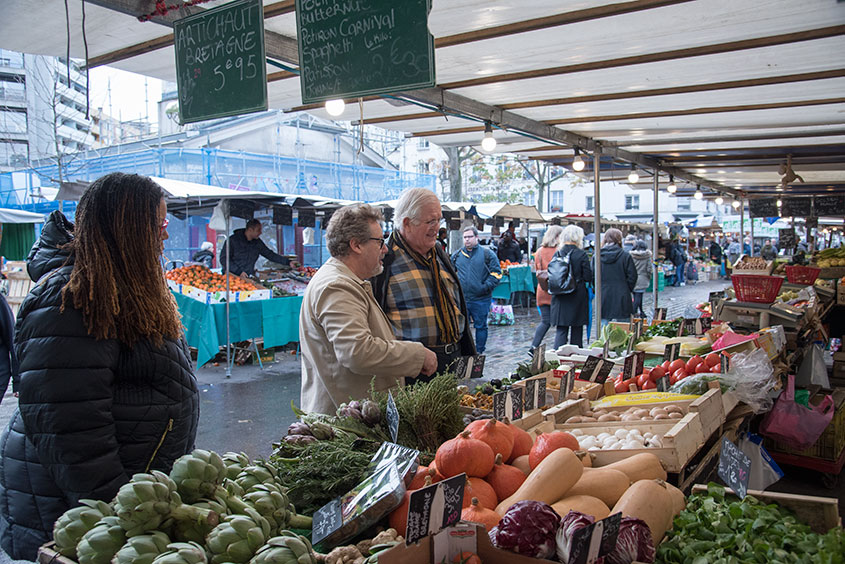
You may have noticed in France that there are a lot of rules about pretty much everything. While some rules are meant to be broken, other rules are taken very very seriously. Now add EU rules to the French rules and you have sometimes even more things to consider when doing business in France. This is no less true than for our wonderful producers.
Have you ever noticed that when you go to a market (or even the supermarket), you have quite a number of signs to read about any of the fresh produce (and fish & meat) you see before you? You may notice things like: “origine”, “calibre”, “variété”, “Cat I”, “Cat II”, “EXTRA”.
What’s the point of the labels?
These labels while not necessary for all produce (and I won’t get into too much of the legality here), are very important to others. So what do they mean? In my early days as a novice French market shopper, I paid them no mind. But they did intrigue me and I wondered exactly what was behind all these labels. I assumed that cat I got first prize and I assumed it meant they were riper and just better than the rest. If you Google this and you may just give up before you get started. But I’m here today to make it a little easier for you by explaining in English what all this means so you have a better understanding of the French food market.
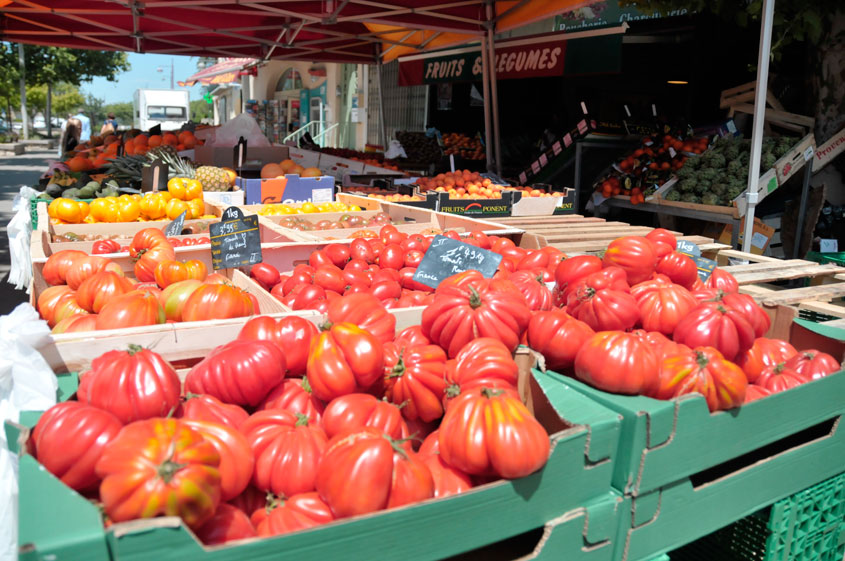
.
Origine – Origin
Since the Mad Cow disease hit its peak in the media in 1996, the origins of meat, from cow to pig, became ever more important to the French consumer. Restaurants are now under the obligation to post in plain sight, the origins of the meats they serve on their menu. To say the least, after the outbreak in the UK, the French were particularly chauvinistic about where their meat came from. They wanted to say if it’s French there’s no risk of “La Vache Folle”. This was true to some extent as there were much fewer cases of the disease in France but there were enough.
Beyond meats, you will see more likely than not, the origin of your product. This tells you a bit about the carbon footprint. It is also allowing you to be a bit chauvinistic so you can decide: I won’t eat tomatoes from Spain for example. I’ll wait till they are ready in France. A choice of course. Some people base their choice on what they know or have heard about pesticide controls in various countries. Others may decide that they want to spend their money supporting local producers. Apart from the country, you may even see regions or cities and towns marked.
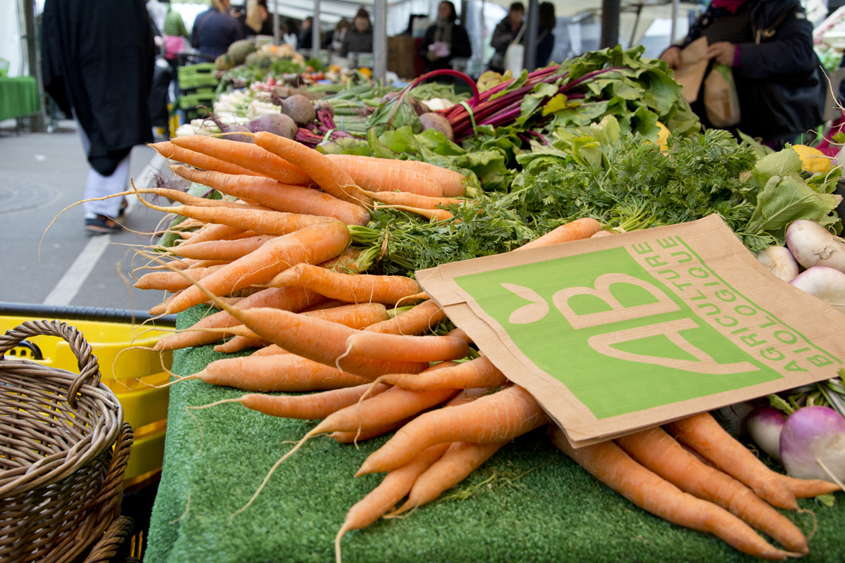
.
Varieté – Variety
This one is pretty easy to understand. It tells you the variety of the produce. There are so many different cherries out there with each having its own characteristic and harvesting time. Not sure which to get, ask for a sample and take note of the name of the one you like. Now they do vary by region of course so that will also tell you from how far away they may have come.
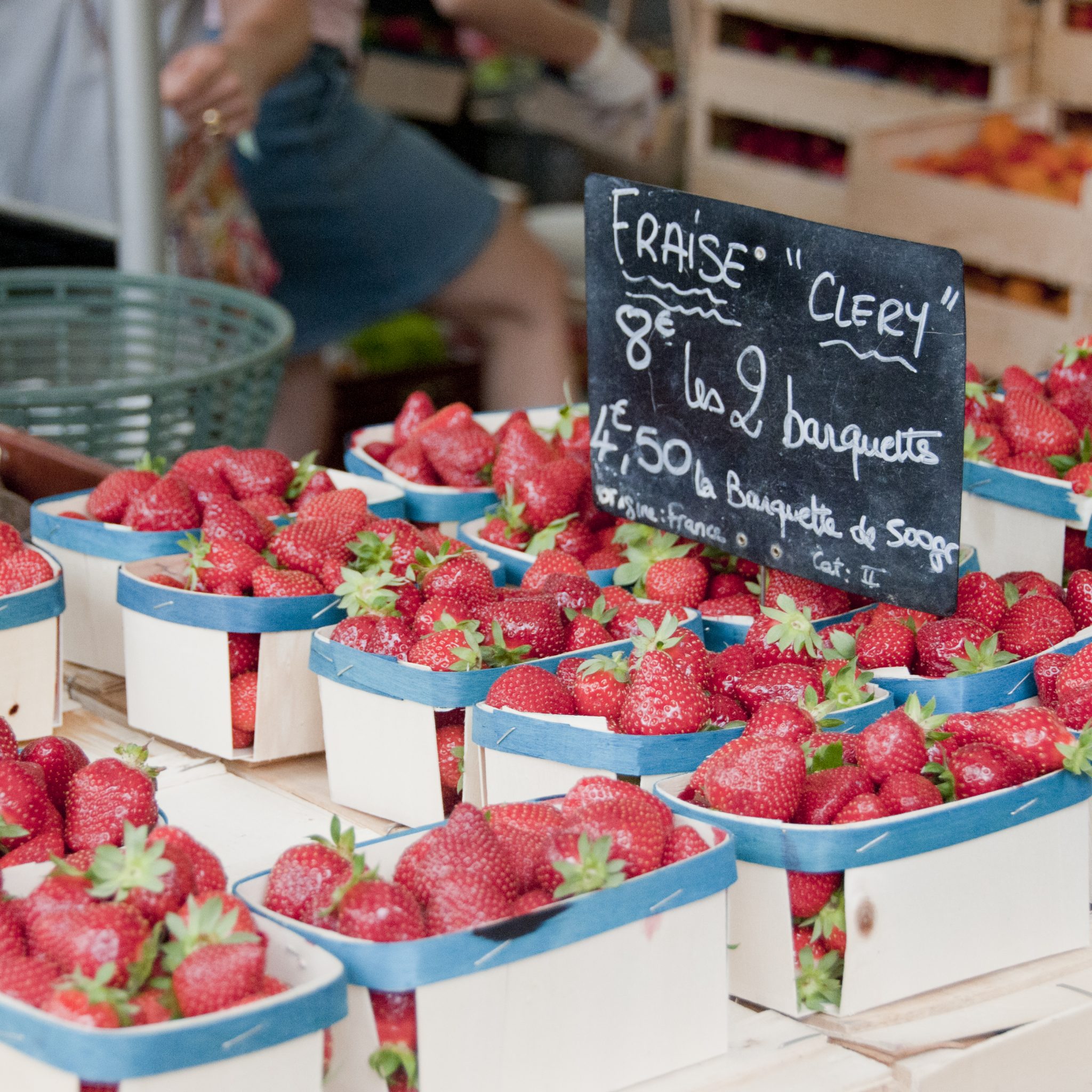
Catégorie – Category
While this is not a sign of the taste, it does tell you about whether the fruit or vegetable has met the standards set by the authorities. These rules set limits to the weight (calibre), visual aspect, and color. Think of it as a beauty contest. The prettier and brighter you are (and your weight), gives that perfect apple, the perfect score. It also plays a major role in the price – but of course!

Cat I (category 1) corresponds to a product that shows only a few flaws. Cat II is the one you will see more often; it has a few more notable flaws – though I challenge you to try to find them. Extra means perfection in production – which is a rarity in nature as far as I am concerned. A product classified as Extra has no clear defects – she hides it well.
There are 10 European-grown products that have to follow the norms set by the OCM (common market organization). They are citrus (except limes, kumquats, and pomelos), strawberries, kiwi, apples, peaches and nectarines, pears, raisins, peppers, salad, and tomatoes. 3 products are subject to French norms only, potatoes, shallots, and truffles. It used to be that 36 products were subject to these rules but these have now been reduced to the 13 in total I mentioned above.
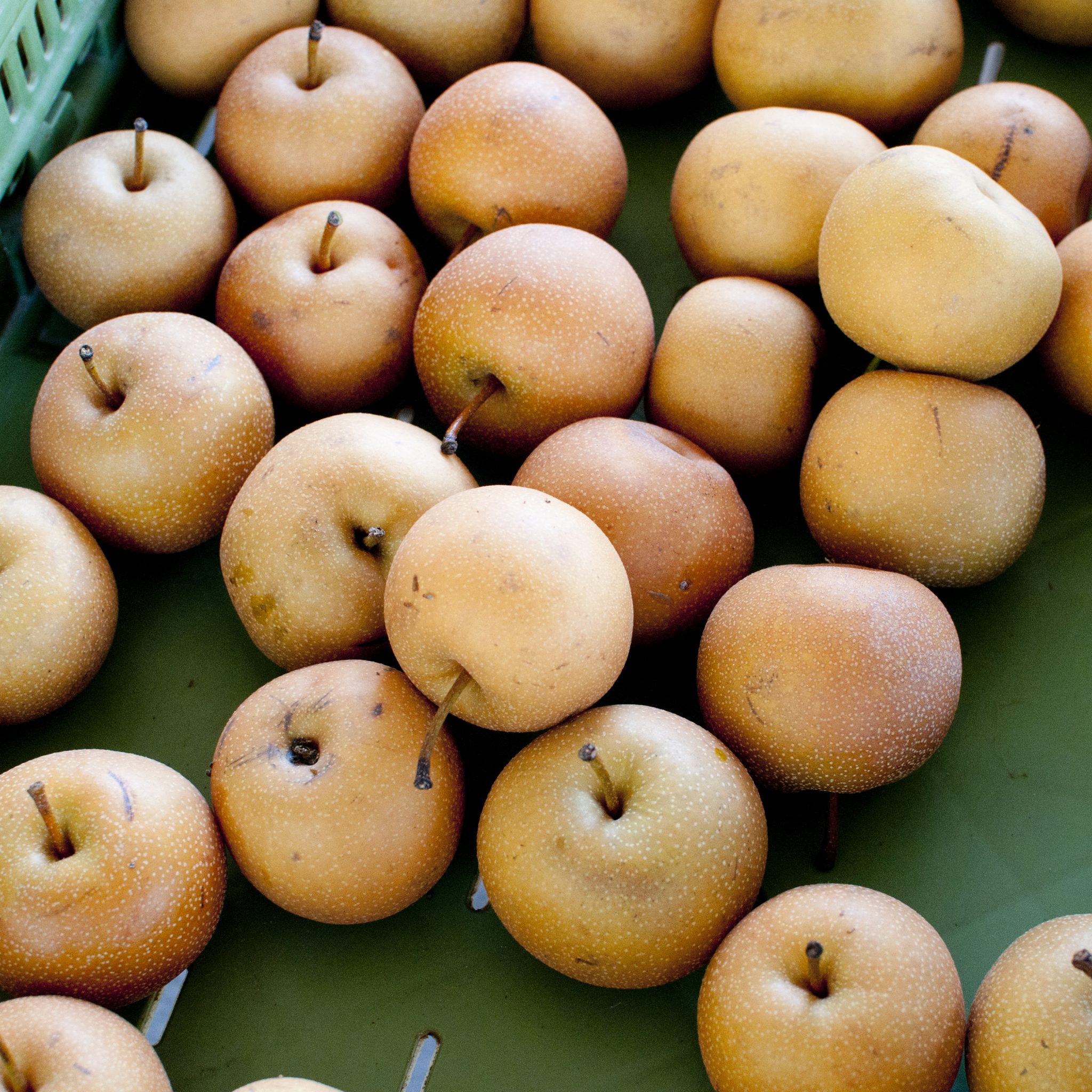
What does this all mean for you? Well not that much really except to your wallet of course. If you believe that your fruits and vegetables have to be perfect in every way, then you go for the Extra and you swallow the extra cost. You have to consider that the more of the Extra that we buy, also pushes the industry to waste. Ugly fruit just doesn’t cut it and sadly get tossed. A relatively new movement has begun to give these products their day in the sun. Intermarché, a supermarket chain in France started to market the ugly (unwanted), inglorious fruits and vegetables to encourage people to give them a chance.
If you go to a producers’ market you are more likely to see these inglorious fruits and vegetables mixed right in with their prettier cousins. Be sure to ask the producer or seller for the piece of fruit you can eat today or tomorrow or whenever it is you want to consume it. They know their products and can guide you to the tastiest morsels regardless of their categories.
.

Why are some fruits and vegetables sold by the piece and others by weight?
The European norms state that fruits and vegetables can be sold by the piece. However, if they are too small or are presented in a container they must be sold by the kilo.
But wait! I bought an apple and they weighed it. Couldn’t they sell apples and pears by the piece as well? Yes, they could but it is rare to see that. Actually, you are more likely to see things sold by weight than by the piece and the rule is not always the same from one vendor to the other or for even the same vendor for the same type of fruit or vegetable. Yes, I know, confusing isn’t it.
Let’s say this, almost everything is sold by the kilo except avocados (most of the time), pineapple, melons, or bunches of herbs, which are sold by the bunch when tied up. Some vendors would prefer to use grams to not frighten away customers with the price. So you could be by 1/2 kilo (500g). You might even score a large container of tomatoes, apricots, and other fruits or vegetables used for preserves and sauces, sold by the box!
Meats and seafood are also sold by the kilo. Cheese is also sold by the kilo unless it is sold by the piece. Still with me? A really large round of cheese is generally cut and weighed. Sometimes smaller whole cheeses are priced by the piece, for example, some goat’s cheese.
Oh! And I forgot to mention, mussels are sold by the liter. It’s a tradition what can I say? Just know that a liter of mussels is around 500g.
.
How much should you ask for if something is sold by weight?
Generally, I go for 500 grams whenever I’m buying things like cherries or strawberries. The more expensive berries are sold by container rather than by weight. For cheese, if you are unsure, you can also show them with your hands how much you want a cut for you. <As for meat and fish, if it is not already portioned out, know that roughly 200g is a portion size when there is no bone for meat. 60g for shrimp for one person small portion. Generally, if you tell the fishmonger or butcher for how many people you wish to buy, they will give you what you need. Ask: “Des crevettes pour quatre personnes s’il vous plaît” (Shrimp for 4 people please).
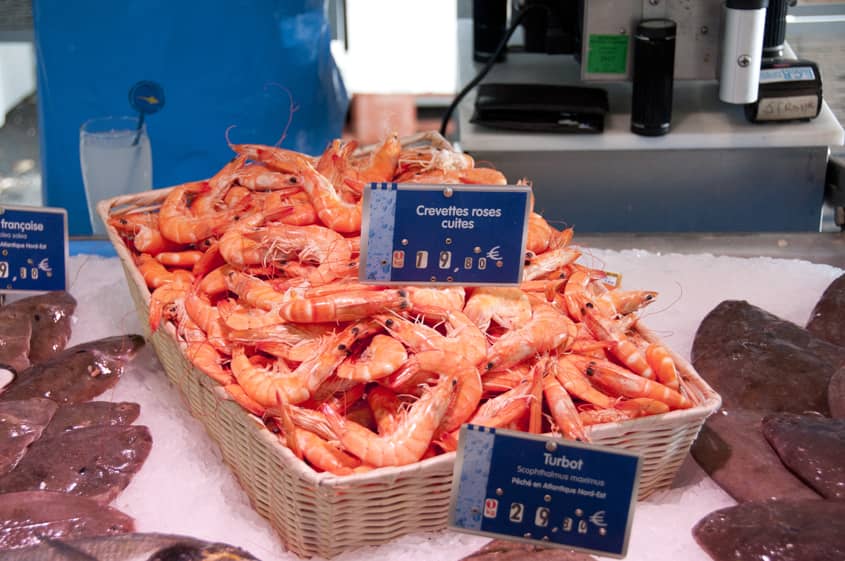
.
Some useful vocabulary for your next trip:
Fermier – You will see poulet fermier which is supposed to mean free-range. I’ll explain why I say supposed to mean in another post.
Décongelé – Often found at the fishmonger – means defrosted. It means the product was caught at sea, frozen at sea and they defrosted it to sell.
Label Rouge – It’s a French quality label – will get into that more in another post so come back and check again.
Côte – côte de porc, côte d’agneau etc – pork chop or lamb chop.
Brebis – sheep.
Au lait cru – unpasteurized and uncooked.
Botte – bunch or bundle when referring to produce, otherwise it’s your boot.
Barquette – container.
Pêché en Atlantique nord – Fished in the northern Atlantic ocean.
Produit du terroir – Local product.
Producteur – grown by the people selling it – only one producer.
Par la pièce – by the unit/by the piece.
Par kilo – by kilo.
S’il vous plaît – Please. This one should always make the list.
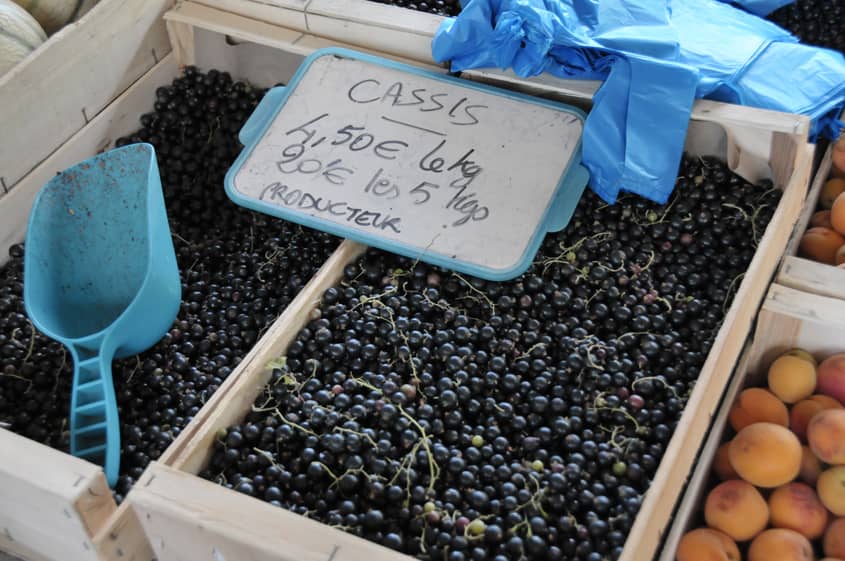
So now that you have a better understanding of the French food market, I hope you’ll venture out and explore & shop. You can always pick up more great French food market shopping tips on one of our French Market classes in Paris or our Week in Uzès.
Interested in French cooking classes in Paris? Book a class with Cook’n With Class Paris – small group sizes, classes all in English.



